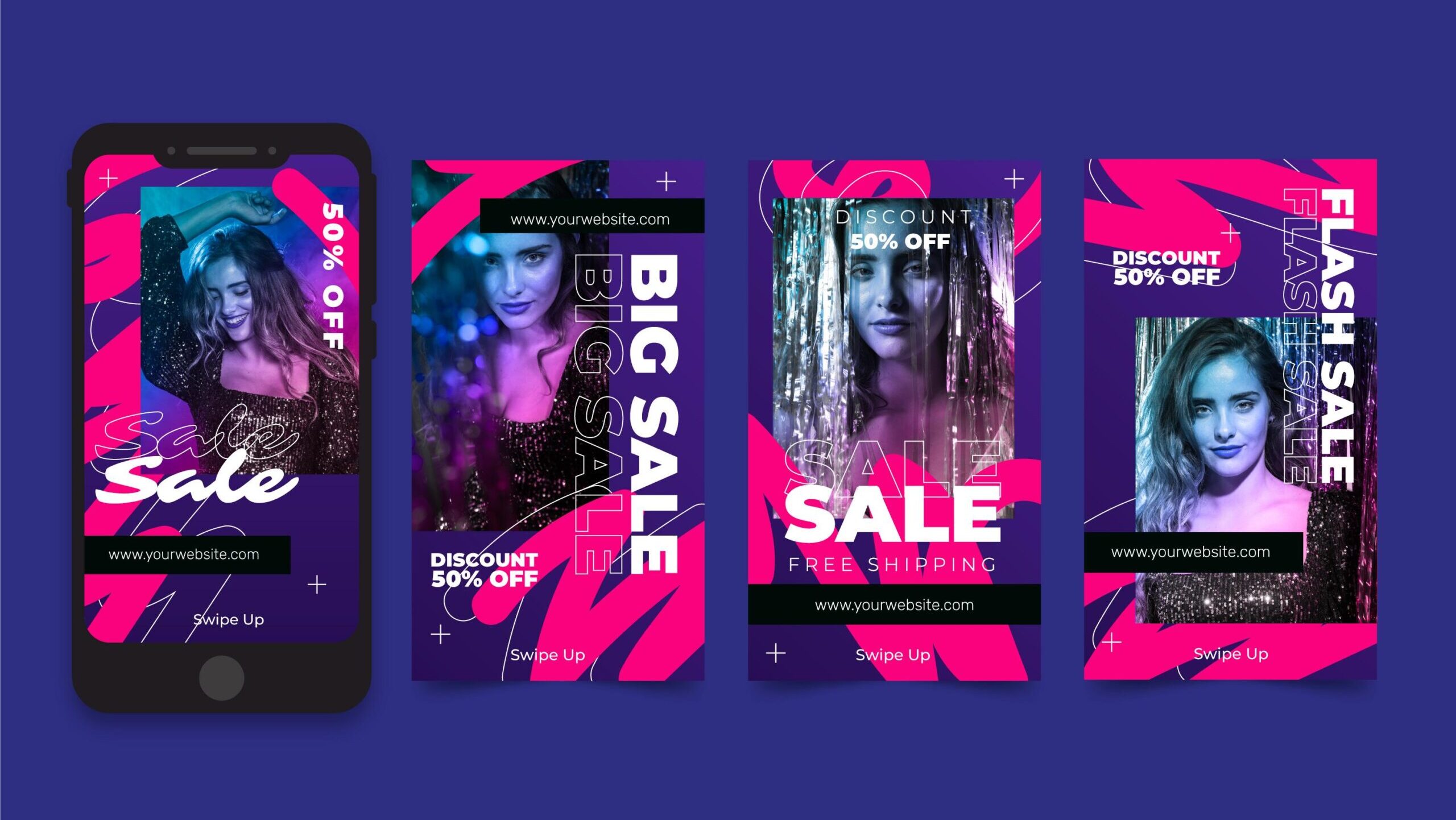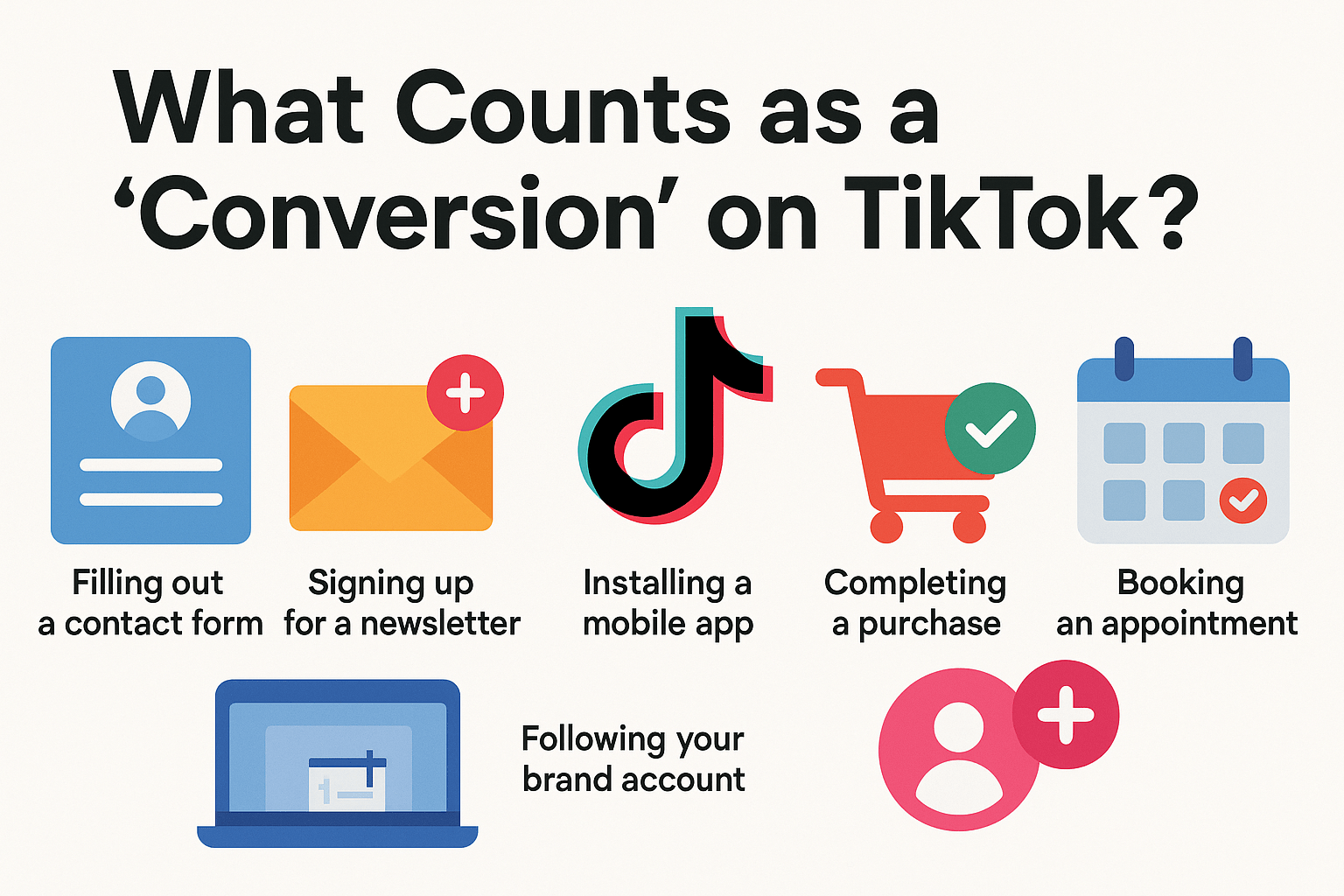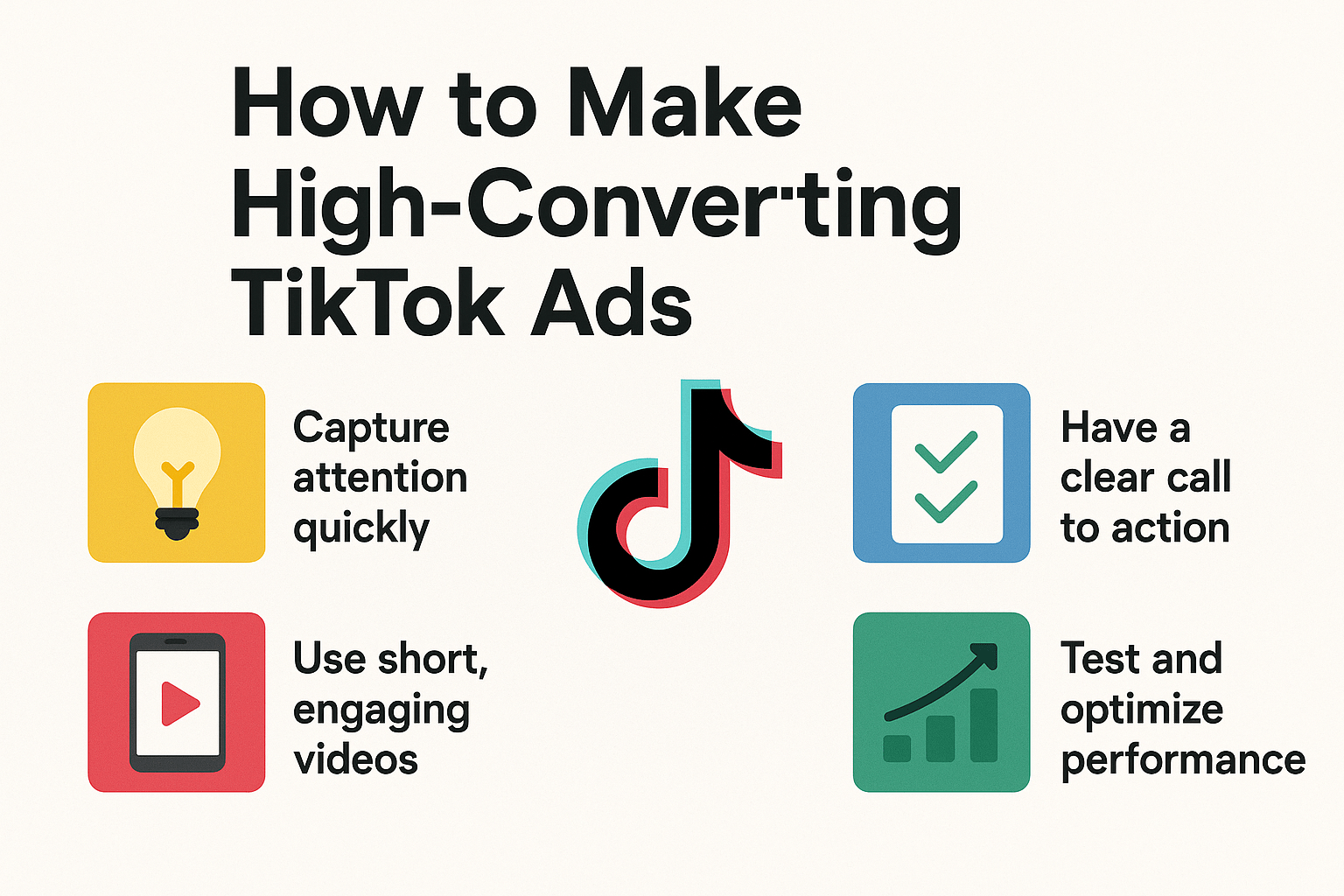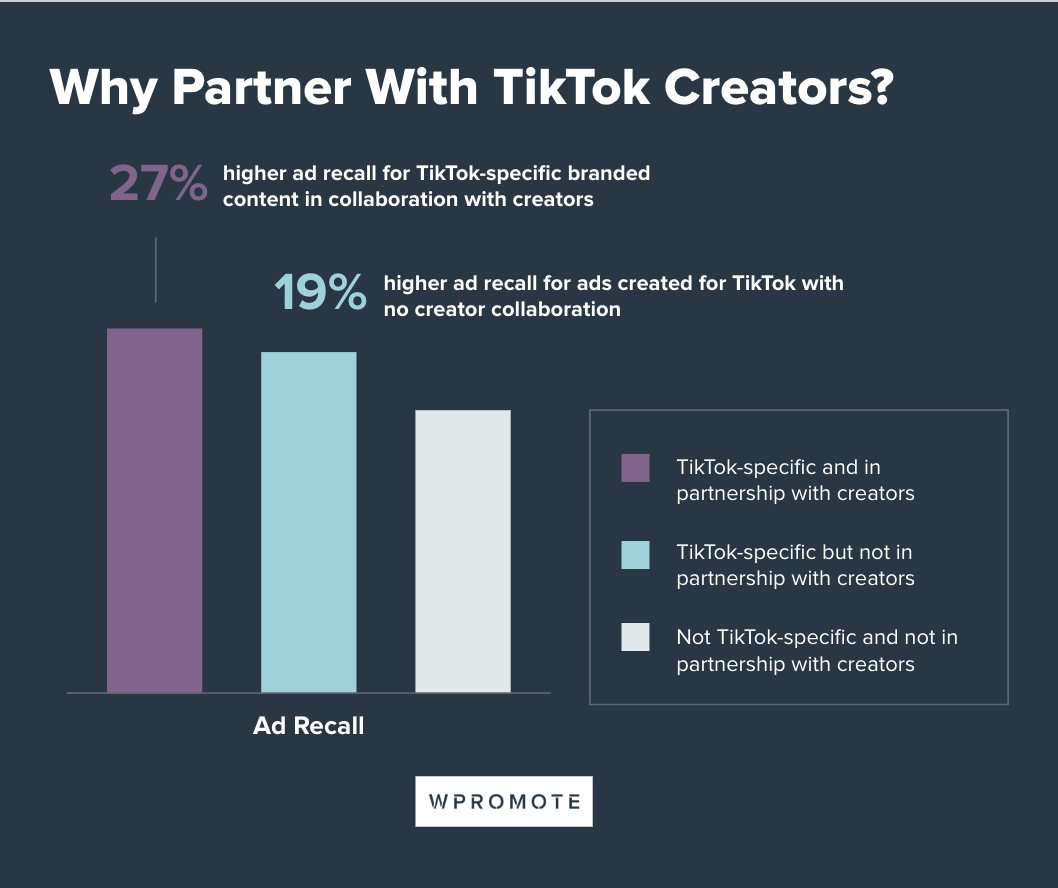
What Are Good TikTok Ad Conversions Metrics
What Are Good TikTok Ad Conversions Metrics
If you’re running ads on TikTok, you’re probably already aware of the platform’s explosive impact on digital marketing. With over a billion active users, a trend-driven content feed, and powerful algorithmic targeting, TikTok gives businesses in New Zealand and around the globe an incredible laboratory for creativity – and a massive stage for commerce. But in this fast-moving ecosystem, what does a “good” conversion really look like, and how can you improve your results?
TikTok ads come in many formats and can drive wildly different outcomes depending on business type, vertical, budget, and audience. Conversion rates, cost per acquisition, creative impact, and clarity of measurement all influence what is genuinely “good.” Let’s get into the details.
What Counts as a ‘Conversion’ on TikTok?
The meaning of a conversion on TikTok depends entirely on your advertising goals. While TikTok offers typical website conversion events — like purchases, add-to-carts and signups — it can also track app installs, form submissions, engagement (like follows or shares), and video views.
A conversion isn’t just a sale. Depending on your objective, considered conversions might include:
- Filling out a contact form
- Signing up for a newsletter
- Installing a mobile app
- Completing a purchase
- Booking an appointment
- Following your brand account
Clearly defining your goal at the outset will be your north star when analysing performance.

Essential TikTok Ad Metrics: Beyond Just Conversions
While conversions represent the ultimate desired action, tracking supporting metrics helps contextualise results and fine-tune campaigns. Here are some of the key figures to keep close:
- Click-Through Rate (CTR): Percentage of people who clicked on your ad after seeing it.
- Conversion Rate: Percentage of clicks that completed your intended action.
- Cost Per Click (CPC): Average amount paid each time someone clicks your ad.
- Cost Per Acquisition (CPA): Actual cost to obtain each conversion.
- Video View Rate: Useful if your ad objective is awareness.
- Engagement Rate: How many viewers are liking, commenting or sharing.
- Return on Ad Spend (ROAS): Total revenue generated divided by ad spend. Essential for e-commerce campaigns.
Closely monitoring and balancing these metrics against each other prevents wasted spend and improves long-term performance.
What Makes for a “Good” TikTok Conversion Rate?
This is the big question. TikTok’s conversion rates are shaped by ad objectives, targeting, industry, and creative approach. While there isn’t a single gold standard, most brands see conversion rates falling within certain ranges:
| Objective | Typical Conversion Rate Range |
|---|---|
| Traffic | 1.5% – 4% |
| App Installs | 2% – 8% |
| E-commerce Purchases | 0.5% – 2% |
| Lead Generation | 5% – 15% (for simple forms) |
Results for video views or engagement will often appear much higher, but they reflect lighter actions.
For New Zealand brands, local nuances in audience size, cultural trends, and average market CPC also impact what’s achievable. Niche markets with strong creative might skew above the averages, while broad or untargeted campaigns could fall below.
Anatomy of High-Converting TikTok Ads
Analysis of the top-performing TikTok ads consistently reveals several shared factors:
- Captivating Visuals from the First Second
- TikTok rewards the punchiest, thumb-stopping content. Motion, bold text, expressive facial reactions and trending music all work in your favour.
- Ultra-Clear Value Proposition
- Clarity beats cleverness. Ads that tell people exactly what they should do (“Shop now,” “Try for free”) outperform those that play coy.
- Short, Concise Messaging
- Aim for 9–15 seconds, even if you have the space to go longer.
- Native Feel and Authenticity
- Highly polished, “TV-style” ads often lose out to content that feels like a genuine TikTok post.
- Strong Calls to Action
- Direct, focused instructions drive behaviour: “Swipe up”, “Tap to learn more”, “Get yours today!”
- Social Proof and Testimonials
- Featuring happy customers or even trending UGC (user-generated content) can give ads more credibility.

Creative Approaches That Shatter Expectations
Some ad concepts repeatedly deliver outstanding results for Kiwi brands:
- Challenges & Hashtags: Getting users involved in branded challenges stirs up engagement, boosting conversion downstream.
- Before/After Reveals: Whether it’s fitness, beauty, home renovations or tech upgrades — showing a “transformation” is a tried-and-true conversion driver.
- Duets & Reactions: Stitching or reacting to fans’ content deepens community and improves relatability.
- Anticipating Questions: Ads that answer likely objections (“Is it really free?”, “Will it fit me?”) reduce friction and raise conversion rates.
Influencer and Creator Partnerships for Conversion
Partnering with TikTok creators is one of the most effective ways to build trust, expand your reach, and drive conversions—especially among younger audiences who value authenticity and peer recommendations. Leveraging the credibility and creative flair of influencers can transform your brand’s presence on the platform.
Identifying and Vetting the Right Creators
- Align with Your Audience: Look for creators whose followers match your target demographic in terms of age, interests, and location.
- Assess Engagement, Not Just Follower Count: Prioritise creators with high engagement rates, genuine interactions, and a history of successful brand collaborations.
- Review Content Quality and Brand Fit: Ensure the creator’s style, tone, and values align with your brand image and campaign goals.
Structuring Effective Partnerships
- Affiliate Links and Promo Codes: Provide unique links or codes to each creator, making it easy to track conversions and incentivise performance.
- User-Generated Content (UGC): Encourage creators to produce authentic, relatable content that feels native to TikTok, such as reviews, unboxings, or challenges.
- Clear Briefs and Creative Freedom: Set clear objectives and guidelines, but allow creators the flexibility to adapt your message to their personal style for maximum impact.
Tracking and Optimising Influencer Campaigns
- Monitor Conversion Metrics: Use TikTok’s analytics, affiliate dashboards, or UTM parameters to track clicks, signups, and purchases driven by each creator.
- A/B Test Creators and Content Types: Experiment with different creators, content formats, and offers to identify what resonates best with your audience.
- Iterate Based on Results: Regularly review performance data and refine your influencer strategy to maximise ROI.
By building strategic partnerships with TikTok creators, brands can tap into new audiences, foster deeper trust, and achieve higher conversion rates through authentic, engaging content.

Image Source: WPromote
Segmenting Audiences for Maximum Lift
TikTok’s targeting lets brands zero in across demographics, interests, and behaviour. The secret sauce to great conversion rates lies in:
- Focusing on the most relevant age range for your product
- Segmenting by gender if your offer is geared primarily toward one
- Layering on interest- or behaviour-based targeting (e.g. dog owners, gaming enthusiasts)
- Retargeting website/app visitors with tailored creative
Audience testing should be a constant discipline. Small shifts can lead to big improvements in results. For example, New Zealand-based startups targeting Gen Z might find that urban audiences in Auckland and Wellington yield twice the conversions as those in regional areas.
Measurement: How to Track True TikTok Value
The platform’s in-built tools offer extensive event tracking, but third-party analytics can provide a more comprehensive view of cross-channel conversions. Key recommendations for accurate measurement:
- Set up TikTok Pixel (for websites) or TikTok Events API (for apps) to track every step of the funnel.
- Use UTM parameters to isolate paid-social results within Google Analytics or similar tools.
- Compare TikTok conversions to those from other platforms like Meta Ads or Google Ads.
- Set up custom conversion events for precise business goals, not just generic sales.
One frequent mistake: obsessing over conversions in-platform but ignoring lifetime customer value. TikTok users may convert lower down the marketing funnel but offer excellent retention or upsell value long-term.
Privacy, Data Tracking, and iOS/Android Changes
The digital privacy landscape is evolving rapidly, and recent updates—such as Apple’s App Tracking Transparency (ATT) framework and changes to Android’s privacy policies—have significantly impacted how TikTok ads are tracked and measured. These changes can reduce the visibility of user actions, making it more challenging to attribute conversions and optimise campaigns effectively.
Navigating Privacy Updates
- Apple’s iOS ATT: Users must now explicitly opt in to tracking across apps, leading to reduced data availability for advertisers. This affects audience targeting, retargeting, and conversion measurement on TikTok.
- Android Privacy Enhancements: Google is rolling out similar privacy measures, limiting access to device identifiers and tightening data sharing protocols.
Mitigating Data Loss with TikTok’s Events API
- Implement the TikTok Events API: Move beyond browser-based tracking by integrating TikTok’s Events API or server-side tracking. This approach captures conversion events directly from your server, improving data reliability even when user-side tracking is restricted.
- Combine with TikTok Pixel: Use both the Pixel and Events API for a more comprehensive view of user actions, ensuring you capture as many conversion signals as possible.
Privacy-Compliant Retargeting Strategies
- Leverage Aggregated Data: Focus on broader audience segments and aggregated insights rather than individual-level data.
- Consent-Driven Retargeting: Ensure all retargeting efforts are based on users who have provided explicit consent, and clearly communicate your data practices.
- Regularly Review Compliance: Stay updated on privacy regulations in New Zealand and globally, and audit your tracking and retargeting practices to ensure ongoing compliance.
By proactively adapting to privacy changes and leveraging server-side tracking solutions, brands can maintain robust conversion measurement and continue to optimise TikTok ad performance in a privacy-first world.
Budget Allocations and Bid Strategies
Spending big doesn’t guarantee big results. TikTok offers a handful of bidding options:
- Lowest Cost Bidding: Best for maximising conversions while spending a set budget.
- Cost Cap: Keeps cost per conversion within a defined range, ideal for profit-focused campaigns.
- Bid Cap: Gives fine-tuned control, but requires ongoing optimisation.
Splitting your budget across campaign objectives — say, 60% toward core conversions and 40% on audience-building or retargeting — can foster stronger results over time. Many Kiwi businesses have seen success by starting small, measuring early conversions, and gradually scaling spend on the best-performing ad sets.
The Power of Constant Experimentation
No matter how well your initial ads perform, audience fatigue, creative burnout and evolving trends mean that iteration is everything. Brands achieving the highest conversion rates:
- Test multiple creatives monthly, from radical new concepts to minor tweaks
- Analyse top-performing TikTok trends and adapt brands’ style accordingly
- Routinely A/B test calls to action, copywriting, video length, and visuals
- Rotate ad offer (discounts, bundles, gifts) to maintain novelty and urgency
Sometimes, a single creative swap or new ad hook can deliver double the conversions overnight.
Common Pitfalls That Drag Down Conversion Rates
Plenty of campaigns underperform on TikTok for easily avoidable reasons. A few of the regular traps:
- Overly generic targeting — trying to speak to everyone often leads to weak conversions.
- Ignoring TikTok’s visual language — if your ad looks like a traditional TVC, users will scroll right past.
- Failing to optimise for mobile — aspect ratios, text visibility and sound must work flawlessly on small screens.
- Lacking a clear next step — viewers should never have to guess what to do after watching.
Being vigilant about these concerns up front prevents wasted spend and increases your likely return.
Real-World Benchmarks: New Zealand and Beyond
To give a sense of what’s achievable, here are some rough benchmarks for mid-sized Kiwi brands running direct-response TikTok campaigns:
| Campaign Type | Average CPA (NZD) | Typical CTR | Conversion Rate |
|---|---|---|---|
| E-commerce (Apparel) | $15 – $35 | 1.6% | 1.2% |
| Food Delivery App Installs | $8 – $22 | 2.3% | 4.1% |
| Local Service Leads | $10 – $28 | 2.0% | 7.2% |
Remember, these are ballpark figures: creative outliers can shatter them. Seasonal variations, creative trends, and adjustments to TikTok’s algorithm can shift averages significantly.
Industry-Specific Conversion Strategies
While the fundamentals of TikTok ad conversions apply across the board, the most effective tactics often depend on your industry. Tailoring your approach to the unique behaviours and expectations of your audience can dramatically improve results. Here’s how different sectors can optimise for conversions:
E-commerce & Retail
- Focus on Shoppable Content: Use TikTok Shopping features and product tags to make it easy for viewers to purchase directly from your videos.
- Leverage UGC and Reviews: Showcase real customers using your products to build trust and authenticity.
- Run Limited-Time Offers: Flash sales and exclusive TikTok discounts can create urgency and drive immediate action.
SaaS & Tech
- Educate with Short Demos: Quick, visually engaging product walkthroughs help demystify complex offerings.
- Highlight Use Cases: Feature customer success stories or “how we solved X problem” content.
- Drive Free Trials or Signups: Use clear CTAs to encourage users to try your software risk-free.
Local Services
- Geo-Targeted Campaigns: Focus your spend on specific regions or cities for higher relevance.
- Showcase Real Results: Before-and-after transformations or customer testimonials work well.
- Promote Easy Booking: Integrate direct booking links or forms for seamless lead generation.
Food & Hospitality
- Leverage Food Trends: Participate in trending challenges or recipes to boost visibility.
- Highlight Unique Selling Points: Showcase signature dishes, ambience, or special offers.
- Encourage User Participation: Invite customers to share their own experiences for a chance to be featured.
Mini Case Study: Apparel E-commerce
A New Zealand-based apparel brand used TikTok Shopping and partnered with local creators to showcase their winter collection. By combining shoppable videos, limited-time discounts, and authentic UGC, they achieved a 2.1% conversion rate—well above the industry average.
Developing Your TikTok Conversion Playbook
While TikTok’s ad environment rewards inventiveness and a flexible mindset, the underlying science of good conversions remains timeless. Brands that thrive are those who understand their audience, clarify their offer, test fearlessly, and learn continuously.
Every Kiwi business has an opportunity to not just ride the TikTok wave, but to shape how users connect with brands in this new era of attention. The sweet spot for conversions sits where audience obsession, creative invention, and smart measurement all come together. By tuning each campaign phase and learning from the data in front of you, TikTok can become a rich source of reliable, scalable growth.

